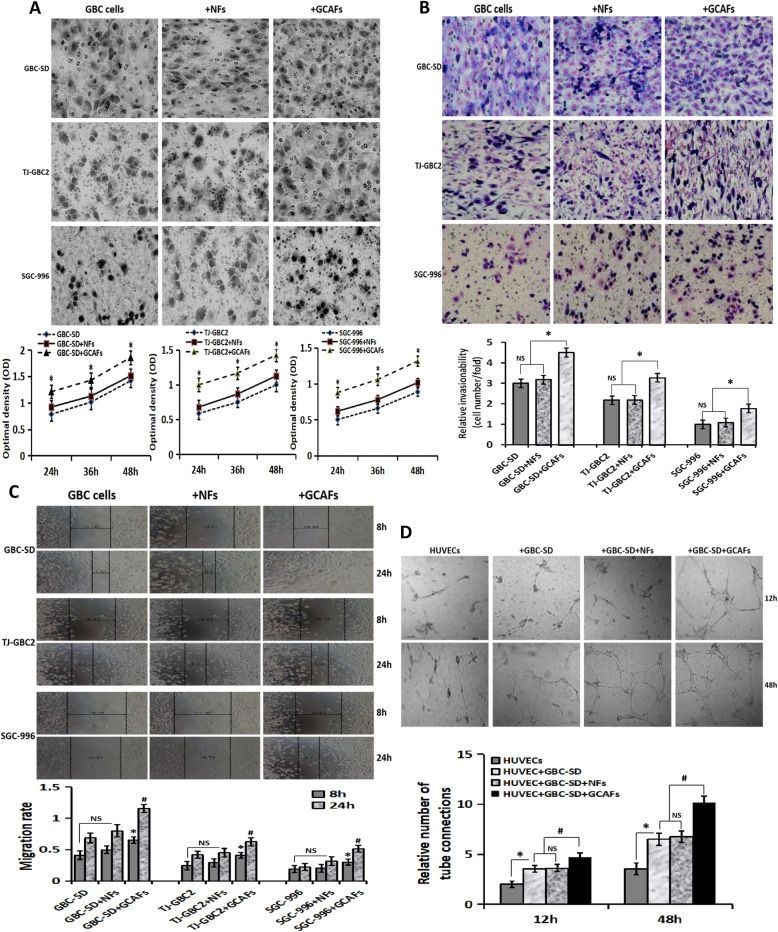Fig. 2.
GCAFs promote the malignant phenotypes of GBC cells/HUVECs. A, Proliferation assay. Compared with NFs, GCAFs significantly promoted the proliferation of GBC cells at 24 h, 36 h and 48 h (vs. GBC cells group and GBC cells+NFs group, all *P < 0.05). B, Transwell invasion assay (Giemsa stain, × 200). The number (relative invasion ability) of cells that invaded through the basement membrane in GBC cell+GCAFs group was significantly more than that of GBC cell group and GBC cell+NFs group (all *P < 0.05). C, Wound healing assay. The cell migration rate of GBC cell+GCAFs group was significantly stronger than that of GBC cell group and GBC cell+NFs group at 8 h and 24 h (all #P < 0.05). D, Tube formation assay. At 12 h: HUVEC group (−); HUVEC+GBC-SD and HUVEC+GBC-SD + NFs (+), (vs. HUVEC, all *P < 0.05); HUVEC+GBC-SD + GCAFs (+), (vs. HUVEC+ GBC-SD or HUVEC+GBC-SD + NFs, all #P < 0.05). At 48 h: obvious tubular formation was observed in all the four groups, the number of tube formed in HUVEC+GBC-SD + GCAFs group was significantly more than that in the other three groups (all #P < 0.01), but no statistical difference was observed between HUVEC+GBC-SD group and HUVEC+GBC-SD + NFs group (P > 0.05)

